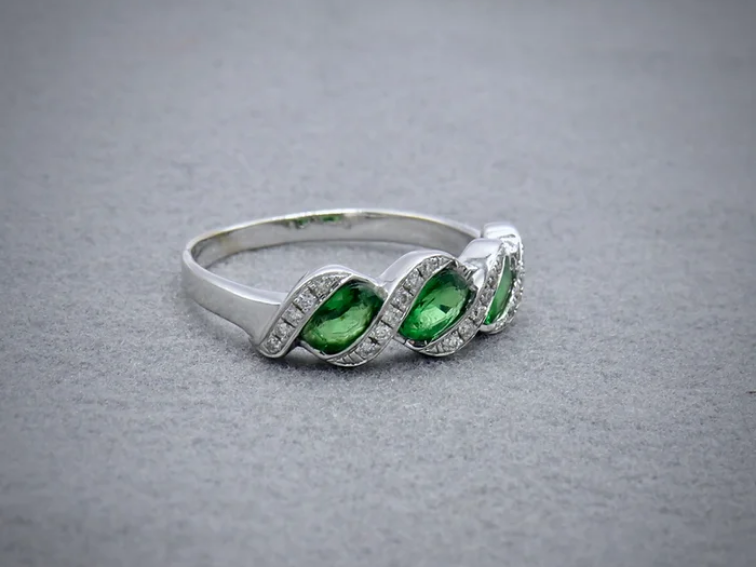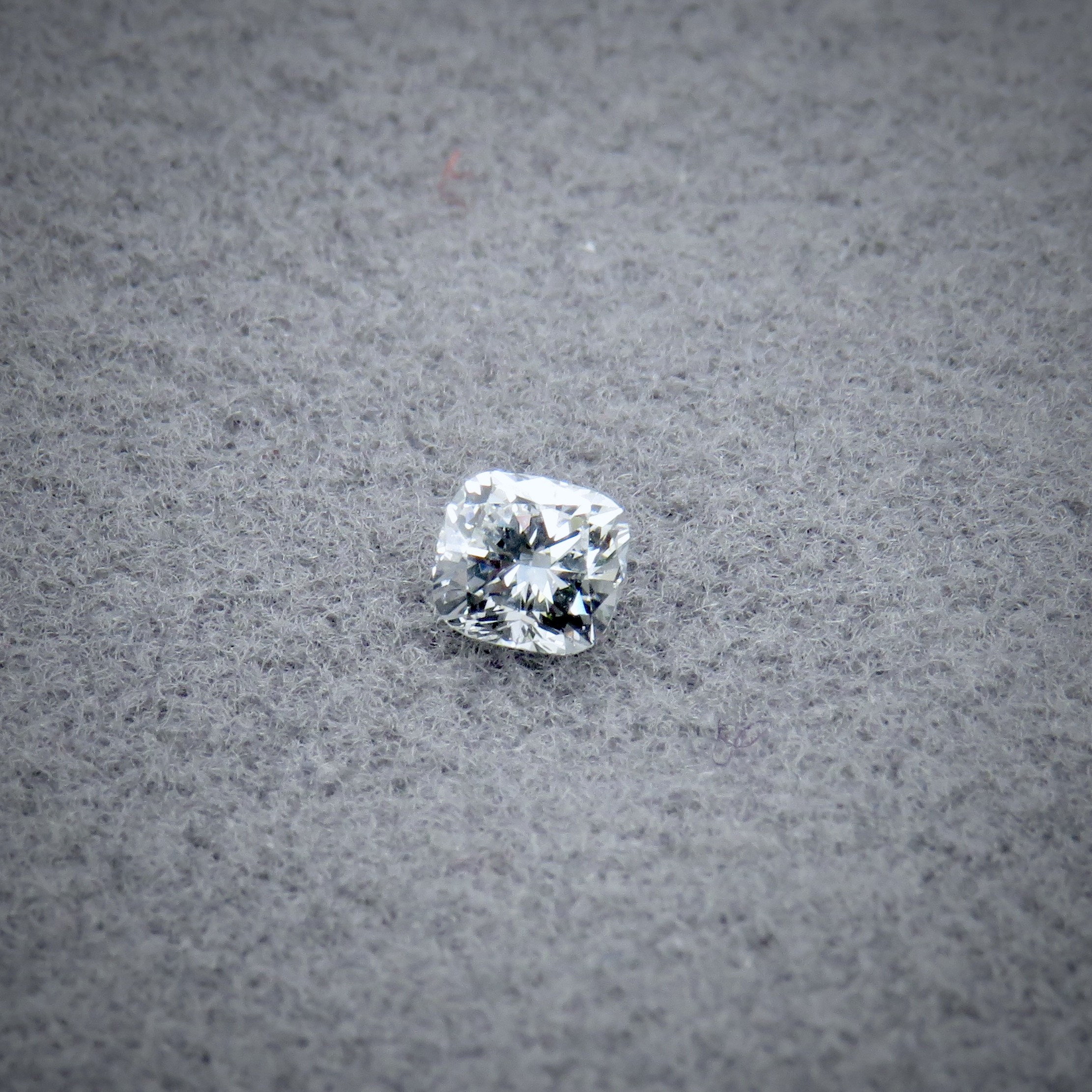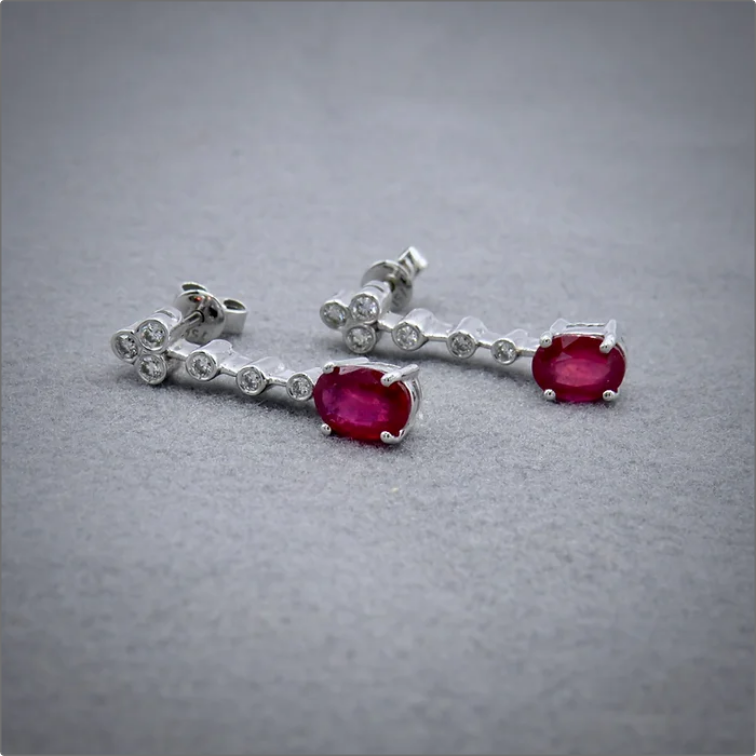Stand Out from the Crowd: Alternative Gemstones
They say Diamonds are a girl’s best friend, but maybe they aren’t after all...there are lots of other gemstones out there that could make the perfect jewellery partner for you instead. So, what are your options and are they a good stone for a ring, earrings, bracelet, or pendant? We delve into the world of some lesser-known gemstone alternatives to give you some more choice when thinking about your bespoke jewellery commission.
Tsavorite
A member of the Garnet family, Tsavorite has been mined in Kenya since the 1970s after it was initially discovered in Tanzania in 1967. The trade name ‘Tsavorite’ was created in honour of Kenya’s Tsavo National Park and is much more marketable than its true name of Green Grossular Garnet! Renowned for its vibrant green and often being mistaken for an Emerald, Tsavorite is an appealing alternative for those who love the colour green. Even though it’s approximately 200 times rarer than Emerald, it’s a fraction of the price due to it not being as well known, so makes it that much more affordable. Although, the ability to find stones over 2 carats is very rare and therefore makes larger stones expensive.
On the Moh’s Scale (hardness scale), it rates between 6.5-7.5 (Emeralds are 7.5-8), and with good toughness, making it durable enough for all forms of jewellery but it may scratch quicker overtime. With a high refractive index and dispersion levels, whilst also being far less included than its green competitor Emerald, it means that Tsavorite has a fantastic brilliance and sparkle. It really compliments, and is complimented by, Diamonds (also with a high refractive index), making it either a brilliant accent stone or main attraction on engagement rings. It truly is a fantastic all-rounder gem which suits platinum and both yellow and white gold - what’s not to love?!

Alexandrite
Most famous for its chameleon like quality as it absorbs light and changes colour, Alexandrite is a scarce, rare gemstone of the Chrysoberyl family. It was originally found in Russia and named after the famous Czar Alexander II. Russian mines are now depleted, but new supplies have been found in Brazil, Sri Lanka and East Africa, but not as vivid as the Russian variety. The ‘Alexandrite Effect’ colour change, from green to red, is due to the type of light the stone is viewed in. With candescent light (sunlight) it appears blue-green, green, teal, or yellowish-green and under incandescent light (candlelight) it turns brownish red, red or reddish purple. The value of Alexandrite comes down to the strength of its colour change and how attractive and distinct the colours are in the two lights.
Inclusions are common in over 1 carat stones but the greater the inclusions, the stronger the colour change tends to be, which means there is a balance to be had on inclusions and colour change vs the price!
Due to Alexandrite’s rarity, which when added to the colour change phenomenon, the 8.5 on the Moh’s scale and the fact that it usually only comes in small carat weights, means that it is exclusive and expensive! Synthetic Alexandrite is also available at a reduced cost, but it’s good to know what you’re buying! It would make excellent accent stones, earrings or pendant if you’re after a stone that will intrigue people.
Kunzite
Kunzite is the best-known variety of the mineral Spodumene and comes in a very attractive pink-violetish purple. Spodumene was first discovered in Sweden in 1800 and it’s manganese that gives Kunzite its pink colour. Darker tones of Kunzite are more valuable with a deep magenta holding the highest value as well as stones with an intense violet hue.
It sits at 6.5 -7 on the Moh’s Scale, so relatively hardy but it also cleaves in two directions, so probably best in a dress ring rather than an engagement ring. In fact, it’s great as an evening stone because an excess of UV or direct sunlight can fade the beautiful colour over time.
This gemstone shows pleochroism (an optical effect where the gemstones colour changes when viewed at different angles) which means that different hues are seen along each of its crystal axes. It also displays phosphorescence, which is the glow of a gemstone in the dark after being exposed to sunlight or UV light, which all adds up to make Kunzite a great dinner party conversation piece!
Tanzanite
Probably the most well-known of the ‘other’ gemstones in the market, but still nonetheless, not an everyday occurring stone, Tanzanite burst onto the scene in a commercial capacity in the 1960s thanks to Tiffany & Co. It was given the name ‘Tanzanite’, rather than blue Zoisite (the actual crystal), as it was deemed to be more marketable, and it pays homage to the only known deposit of commercial importance in the Merelani Hills in Tanzania. Often described as a “thousand times rarer than diamonds” this blue gemstone has firmly cemented its place in the market.
As with most gems, the value in Tanzanite lies with colour and hue. Markets dictate that those stones closest to a strong sapphire-like blue are the most valuable. This is in part that Tanzanite with more blue hues is faceted along the width, not the length, of the crystal to enhance the blue colour. Often, this means weight and size are sacrificed for colour and therefore drives the price. It is also pleochroic, technically trichroic, as each crystal has three colours: blue, purplish red and greenish-yellow brown. Heat treatment is common to reduce the bronze colours and increase the blue and is widely accepted.
Due to being 6.5 on the Moh’s Scale, it means that it’s low enough to be vulnerable to scratching during normal wear if used in a ring and isn’t advised for use in everyday rings. Setting and design can help protect the stone and of course, not wearing it for activities where it could get scratched easily helps. For lovers of blue gems, Tanzanite is an alluring and beautiful proposition in its own right!
Spinel
The most famous Spinel sits in the British Imperial State Crown and was long thought to be a ruby having passed through many hands before coming a prize of war and being called the Black Prince’s Ruby! Only in 1783 did a mineralogist identify that Rubies and Spinel were not the same thing, even though once faceted and polished the two red stones could look nearly identical. But Spinel is a beautiful gemstone without the Ruby comparison. In fact, Spinel comes in a multitude of colours, from strong, deep colours to light pastels in all shades of pink, lavender, red, orange, purple, blue and even black. Red Spinel’s are still the most sought after and celebrated but blue and pink are gaining in popularity.
Spinel crystals have no true cleavage, stand at 8 on the Moh’s Scale and have a high refractive index so when cut and polished well gives them excellent brilliance and sparkle, making them ideal for everyday use in jewellery. Even though Spinel is rarer than Ruby, it hasn’t impacted its price (yet) and therefore makes it very appealing to a discerning market. Most natural Spinel’s in the market are unheated making their natural beauty even more appreciated and therefore the gemstone more popular. At a lower price per carat than Rubies, Sapphires, Alexandrites and Diamonds, this underappreciated gem offers beauty and brilliance without the price tag.
Eeny Meany, Miny, Moe…
So much choice! Having options is a great way to maximise a budget to the look you’re after. For example, the lower price point of Spinel compared to Ruby means you could get a larger stone without having to compromise on the quality. Another plus is that your bespoke jewellery will always be even more of a talking point when you use gemstones that are not seen every day! So, which will you choose? Get in touch to start your bespoke jewellery story and let Sophie guide you through the options for finding the right gemstone for you.
Related Articles

The 4Cs: What it Means For Your Diamond
The likelihood is you’ll have heard the phrase ‘the 4Cs’. But what do these 4Cs mean and how important are they? Read on to find out more

What the Corundum! All you need to know about Sapphires and Rubies
Sapphires and rubies are part of the same family – corundum. In this blog, we delve into these gemstones to find out more!